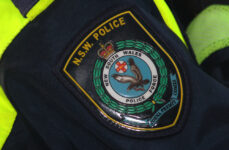What is ‘Child Abuse Material’ in New South Wales?

A 48-year old New South Wales police sergeant was arrested on Friday 29 January 2020 and charged with accessing child abuse material online.
The sergeant, who is attached to a ‘specialist command’, was taken to Fairfield Police Station where he was refused police bail.
He has been formally suspended from his duties pending the criminal proceedings.
It is the latest in several arrests of New South Wales police officers for child pornography and child sexual assault offences.
Live streaming of child abuse material
Last year, a report by the Australian Institute of Criminology identified that more than 200 Australians have collectively paid more than $1.3 million to watch live streamed child sexual abuse activities which were filmed in the Philippines between 2006 and 2018.
The institute matched the transactions using AUSTRAC (Australian Transaction Reports and Analysis Centre) records that linked the accounts in Australia to people arrested for child sexual exploitation in the Philippines.
More than 2,700 financial transactions were linked to 256 webcam child predators supplying ‘life streamed’ porn, where the abuse was happening in real time and offenders watching could request the abuse.
To tackle the growing problem, the Morrison government has announced it’s $1.67 billion Australian Cyber Security Strategy 2020, with a significant investment in enhanced police powers and new laws which would allow the Australian Signals Directorate (ASD) to broaden its reach.
In the weeks prior to Christmas, Peter Dutton introduced legislation to Parliament as part of this overall strategy. The Surveillance Legislation Amendment (Identify and Disrupt) Bill aims to give Australian Federal Police, the Australian Criminal Intelligence Commission (ACIC) and the Australian Signals Directorate spy agency, sweeping powers to disrupt and investigate a much broader range of crimes, particularly those related to the dark web.
What is ‘child abuse material’ in New South Wales?
Section 91FB of the Crimes Act 1900 (NSW) defines “child abuse material” as material that depicts or describes, in a way that reasonable person would regard as being, in all the circumstances, offensive, such as:
- A person who is, appears to be or is implied to be, a child as a victim of torture, cruelty or physical abuse
- A person who is, appears to be or is implied to be, a child engaged in or apparently engaged in a sexual pose or sexual activity (whether or not in the presence of other persons)
- A person who is, appears to be or is implied to be, a child in the presence of another person who is engaged or apparently engaged in a sexual pose or sexual activity, or
- The private parts of a person who is, appears to be or is implied to be, a child.
In determining whether reasonable persons would regard particular material as being, in all the circumstances, offensive, the following factors are taken into account:
- The standards of morality, decency and propriety generally accepted by reasonable adults
- The literary, artistic or educational merit (if any) of the material, and
- The journalistic merit (if any) of the material, being the merit of the material as a record or report of a matter of public interest
- The general character of the material (including whether it is of a medical, legal or scientific character)
Private parts are a person’s genital area or anal area, or the breasts of a female person.
Under the definition, a ‘child’ is a person under the age of 16 years.
The offence of producing, disseminating or accessing child abuse material
Disseminating, possessing or producing child abuse material is an offence under section 91H of the Crimes Act 1900 (NSW) which carries a maximum penalty of 10 years in prison.
To establish the offence, the prosecution must prove beyond reasonable doubt that:
- You possessed, disseminated or produced material, and
- The material was child abuse material.
‘Possession’ includes physical custody or control of material or data
‘Dissemination’ includes:
- sending, supplying, exhibiting, transmitting or communicating to another
- making available for access by another, and
- entering an agreement or arrangement to do so
‘Production’ includes:
- filming, photographing, printing or otherwise making
- altering or manipulating, and
- entering an agreement or arrangement to do so
Child abuse material charges cover: Filming, photographing, printing or otherwise making child abuse material, or altering or manipulating any image for the purpose of making child abuse material, or initiating or entering into any agreement or arrangement to do so.
Defences to child abuse material offences
Defences to the charge of disseminating, possessing or producing child abuse material include that:
- You did not know, and could not reasonable have known, that you possessed, disseminated or produced it,
- Your conduct benefited the public through law enforcement or administration, or the administration of justice, and did not extend beyond it,
- The material received a classification for publication,
- The use of the material was approved by the Attorney-General for research, or
- The material depicts you and would not be child abuse material in the absence of your image.
An additional defence is where you received the material unsolicited and took reasonable steps to get rid of it upon becoming aware of its nature.
Legal exception
A legal exception to child abuse material charges is that:
- The possession of the material occurred when you were under 18, and
- A reasonable person would consider the possession acceptable considering:
- The nature and content of the material,
- The circumstances whereby you came to possess it,
- The age, vulnerability and circumstances of the child depicted,
- Your age, vulnerability and circumstances, and
- The relationship between you and the child depicted.
Accused of a child abuse material offence?
If you have been accused of sharing, having or making child abuse material, call Sydney Criminal Lawyers anytime on (02) 9261 8881 to arrange a free conference with an experienced criminal defence lawyer who will advise you of your options and the best way forward. Together with our head office in the Sydney CBD, we have criminal lawyers in Parramatta, Liverpool, and other convenient office locations across the Sydney Metropolitan area, and beyond.








